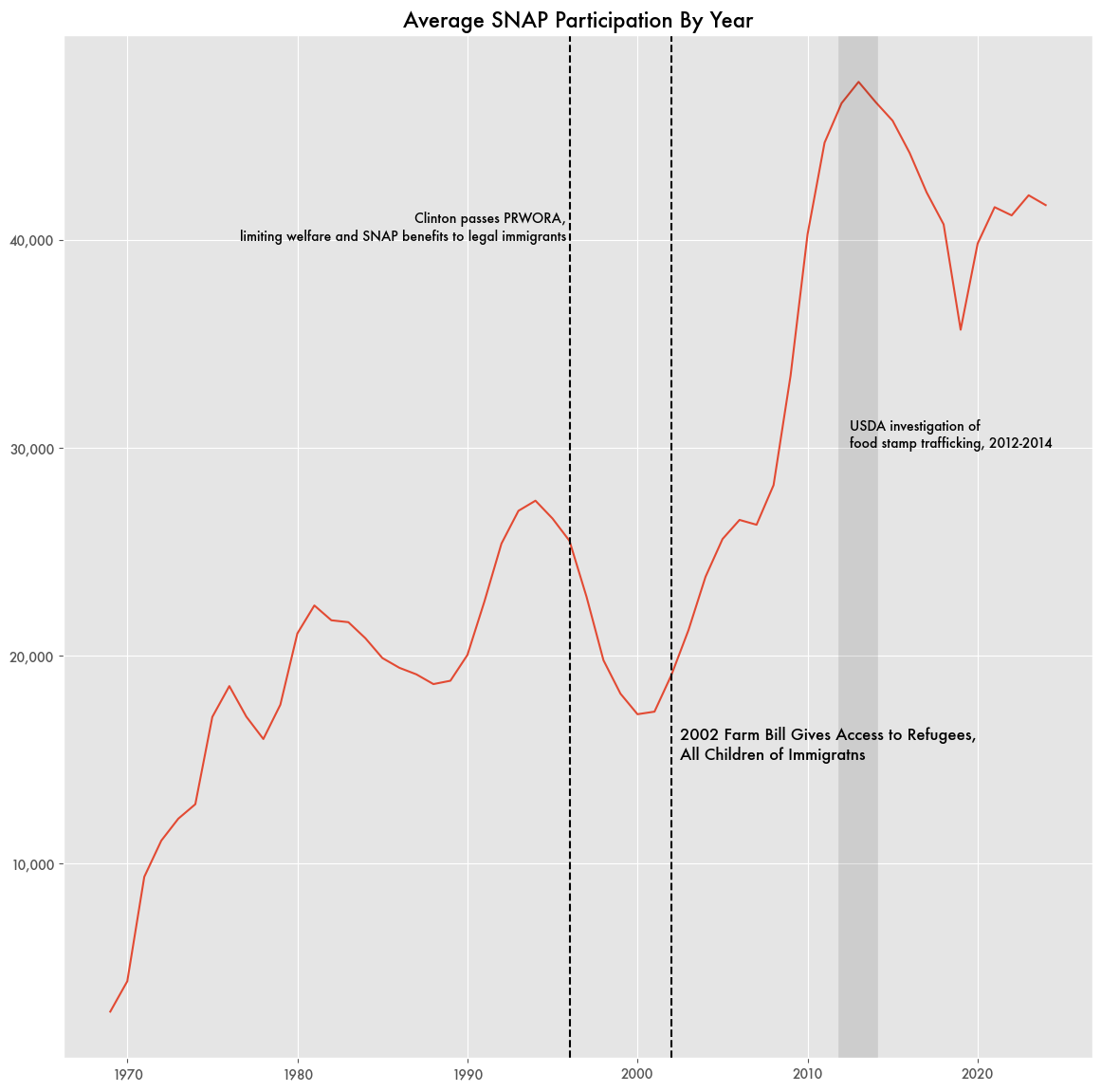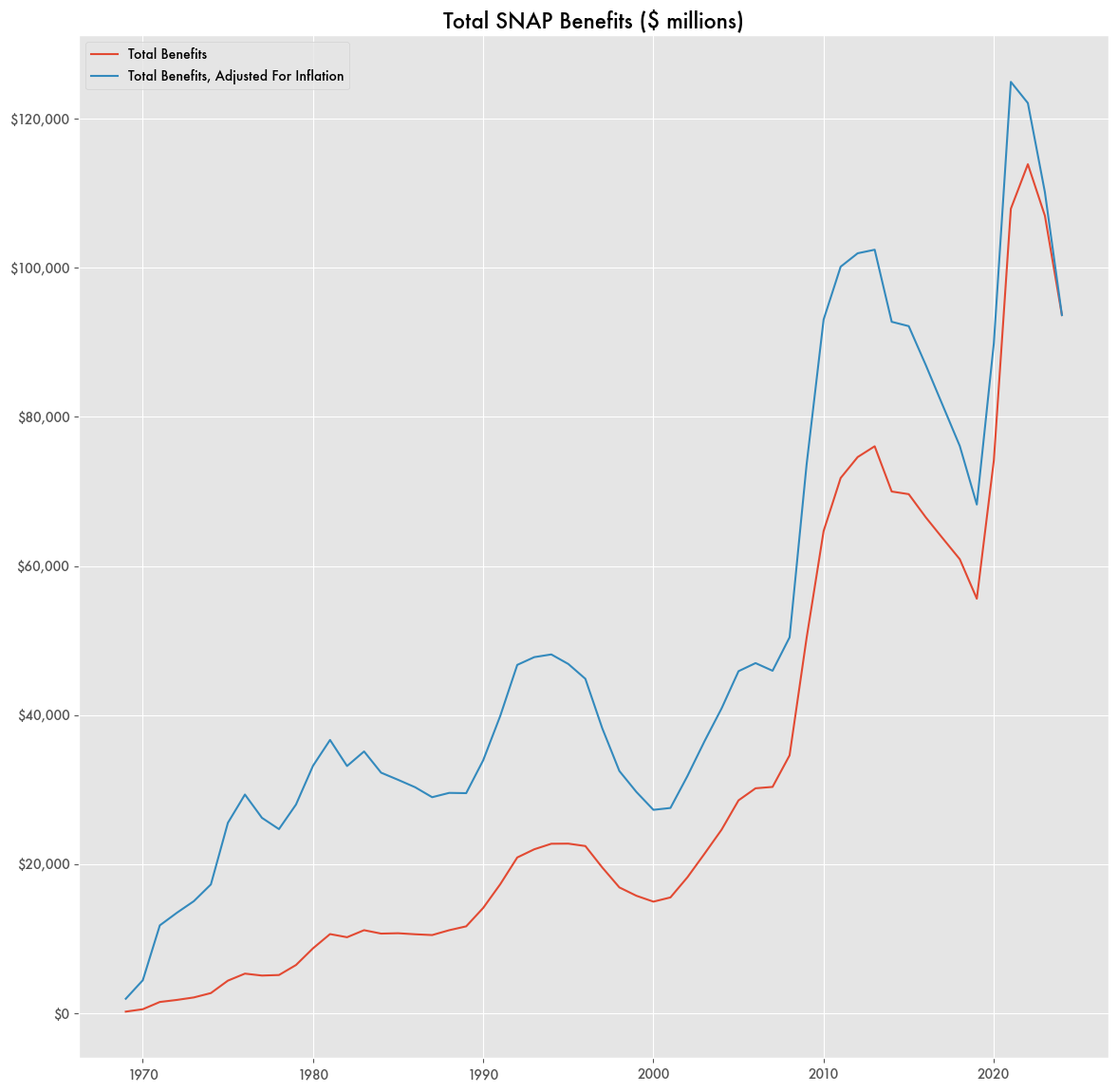The Large Swings in Food Stamp Participation
With the recent government shutdown over the budget, access may be limited to the Supplemental Nutrition Assistance Program (SNAP) program that provides government subsidies for food for those in need—otherwise known as food stamps or EBT (Electronic Benefit Transfer) based on the computer system that provides them.
That could potentially affect over 40 million recipients—a surprisingly large number for those who might be considered earning near the poverty line. The implication is that either poverty in the U.S. is more widespread than most people understand or the program is rife with abuse.
Access to food stamps is not necessarily easy. Illegal immigrants cannot apply, capable working age adults have to show that they are trying to get a job to qualify, and there are numerous restrictions and calculations based on household income and assets that determine the total amount of subsidy. The average recipient only gets around $2,500 a year.
But there’s some indication that it was legislative changes to the program over the last thirty years that added large segments of the immigrant community causing it to double in size.
Various Legislative Changes
Under the Clinton administration, welfare access was substantially curtailed, which also included restrictions on food stamps under the Personal Responsibility and Work Opportunity Reconciliation Act of 1996 (PRWORA). It created definitions for “qualified” vs “unqualified” immigrants who might have access. Qualified immigrants would include those who immigrated legally and had been in the country for five years. As a potential result, average annual participation in the program would decline by 10 million after PRWORA’s passage.
Under the Bush administration, the 2002 Farm Bill would open up access to the program for refugees and children of any immigrant independent of their legal status in the country. Between 2002 and 2012, the program would more than double to 46.6 million participants.
In 2012, the U.S. Department of Agriculture (USDA), which operates SNAP, would launch an investigation of waste, fraud, and abuse into the program, with an emphasis on food stamp trafficking—the resale of food stamps for cash. Over $1 billion a year worth of food stamps were estimated to be resold between 2012 to 2014 and involved over 10 percent of participating stores. Potentially as a result of increased enforcement, participation would decline again by about 10 million to around 37 million a year by 2020.
How much of those swings in participation are related to illegal immigrant households with children who would qualify is difficult to tell as data on illegal immigration is fuzzy. A report from the Center for Immigration Studies—a pro-immigration non-profit—estimates that 17 percent of illegal immigrant households used SNAP. Pew Research estimates the number of illegal immigrant households in 2023 at 7.5 million. Together, that would put the number of illegal immigrant households using SNAP at less than 1.3 million, with the number of children in those households who qualify being some multiple of that.
More likely a substantial amount might be coming from refugee participation. Department of Homeland Security lists the number of refugees in the U.S. at 650,000 added per year. If all of them were on SNAP, that would be 6.5 million cumulative over the last ten years—maybe not enough to account for the complete growth in the program but a substantial amount nonetheless.
Changes as part of the Big, Beautiful Bill being debated would likely cut off access to food stamps for refugees as well as incorporate additional restrictions and verifications for those otherwise eligible.


